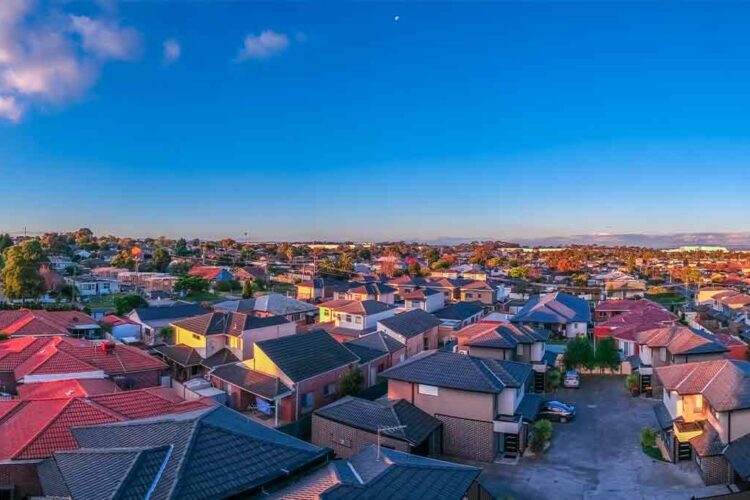Rising mortgage rates could be making it harder for Australia to build the new homes it needs.
New home markets in Sydney and Melbourne have become the worst hit as a result of cash rate hikes, just as those markets need to increase the supply of new dwellings to address the housing supply crunch.
That’s according to the Housing Industry Association’s chief economist, Tim Reardon, who called out a worrying trend revealed in the association’s latest economic and industry outlook report.
The economist said that while the Reserve Bank of Australia’s rate increases are yet to adversely impact the lagging indicators of economic activity like unemployment or inflation, they are clearly impeding future home building activity.
“Leading indicators of home building activity, including approvals and lending, have fallen sharply to decade lows, and have remained at these levels for most of 2023,” Mr Reardon said.
The year ahead, he said, would see the numbers of new home starts drop even further, particularly in the markets of Sydney and Melbourne.
“This will flow through to a significant slowdown in detached home building in 2024, producing the lowest level of new commencements in more than a decade and keeping apartment construction suppressed. This low volume of new home commencement is at odds with the goal of increasing the supply of housing stock, especially in the tight rental markets of Sydney and Melbourne,” he said.
Detached house commencements declined to 109,890 in 2022–23, which is 22.1 per cent down from the 2020–21 peak. Detached house commencements are expected to decline by a further 10.9 per cent in 2023–24, which will represent the weakest year since 2012–13.
Mr Reardon attributed the hit on these major markets to the higher costs associated with delivering house and land packages in the two most populous cities.
But new home builds are faltering across many of the smaller capitals and regions as well.
“House building activity is set to slow in all regions, except for Western Australia, under the weight of rising interest rates,” Mr Reardon said.
And while the cost of building materials is stablising, it is unlikely that they will fall enough to grant homebuilders a reprieve and stimulate the sector.
In Mr Reardon’s view, it’s time for governments to increase the support for new home building and prioritise the accessibility of land.
He noted: “There remains a significant volume of building work still to be completed and, as this occurs, home building will drag on economic growth and push unemployment higher.
“The cost of building materials and labour is stabilising on this side of the pandemic, but they are not likely to fall substantially.”
“Increasing the volume of new homes commencing construction against the rising cost of borrowing will require governments to lower the cost of shovel-ready land, attract more investment – especially from overseas – and reduce tax imposts,” concluded Mr Reardon.


